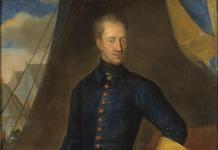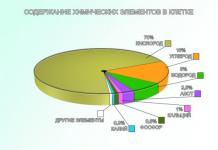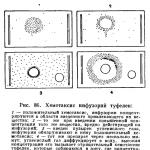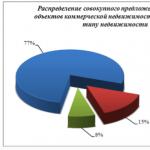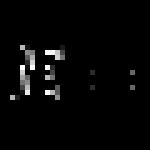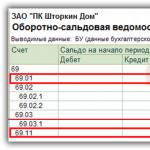Beginning of the Northern War
In $1697-1698$. Peter I held Grand Embassy across European countries. As a result, a coalition was created against Sweden, which was then the strongest northern country. The coalition was named Northern Union. Russia intended to gain access to the Baltic through war and return the Baltic lands, and also hoped to gain Swedish Ingria. The largest fortress in this region was Narva. According to the agreement in the Northern Alliance, Russia declared war on Sweden immediately after the conclusion of a truce with Turkey at the end of August $1700. In the outbreak of the Northern War, Ingermanland became the main target.
Preparations for the Battle of Narva
The Russian army had sufficient strength, but the reforms begun by Peter I required continuation.
Example 1
So, in particular, the army lacked discipline and the necessary military knowledge, as well as support.
However, young Peter I believed that the army was ready for war; he planned to bring $40,000 infantry, $10,000 noble cavalry and $10,000 Cossacks to Narva. The Swedish army was better organized.
The march to Narva of the Russian troops was quite long, because... The movement was slowed down by the convoy with equipment, ammunition, etc., as well as by rains. The advanced regiments approached the fortress $2$ weeks after the start of the war - by September $10, $1700. And the latter did not have time for the battle at all: for example, $10$ thousand Cossacks were in Pskov, the Pskov-Pechora Monastery and Gdov, and $10$ thousand soldiers led Repnin A.I., were still in Novgorod.
Siege
The garrison of Narva was about $2,000 people. Narva was located on the western bank of the Narva (Narova) River, and Ivangorod was on the eastern bank. There was a bridge between these fortresses, which made a siege very difficult. The siege was led personally by Peter I. In the second half of October, Russian artillery began shelling Narva, but the guns only lasted for a couple of weeks and did not achieve any effect at all (the guns were small-caliber). Thus, the shelling failed.
In the current situation, the Northern Alliance showed its inconsistency: Denmark capitulated, the king of the Polish-Lithuanian Commonwealth August II retreated from Riga. But Charles XII, King of Sweden, sent additional forces to Ingria and arrived himself.
At the beginning of November, a Russian detachment Sheremetev was defeated at the Purtz fortress (in a marshy area on the coast of the Gulf of Finland between Narva and Revel, i.e. Tallinn). Sheremetev managed to capture two officers who, following instructions, greatly exaggerated the real information about the number of Swedish troops.
Main battle
Fearing the possible actions of Augustus II, as well as the Cossacks who were in Pskov and Repnin’s soldiers in Novgorod, Charles II did not equalize the number of troops with the Russians. Soon the Swedes defeated Sheremetev at Pihayogi, because. he dispersed the detachment to search for forage.
$10$ November captain of the Preobrazhensky regiment Jacob Gummert went over to the side of the Swedes. This greatly undermined the attitude towards foreign officers.
Having learned from Sheremetev about the approach of the Swedes, Peter I left for Novgorod. The king transferred command to the duke de Croix. As a result, the general battle of November 30 took place without the king. The Swedes attacked unexpectedly thanks to heavy snowfall and a headwind for the Russians. The Russian army suddenly began to panic: someone tried to escape, many drowned, some beat foreign Germans, blaming them. De Croix surrendered to the Swedes. But the $3$ regiment of the new formation fought desperately. By nightfall the unrest intensified. The next morning the prince A. Imeretinsky, A. Golovin, Prince Y. Dolgorukov and I. Buturlin Negotiations for surrender began.
Note 1
The Russian army left Narva without banners and weapons.
Results
It was a heavy defeat for the Russian army: they lost many soldiers, including command staff, artillery, and the reputation of the army collapsed. But Charles XII recklessly decided that he had defeated Peter I for a long time, while the Russian Tsar began to actively carry out military reform, now seeking to rely on his compatriots in leadership positions.
Peter I's attempts to make peace with Charles XII were unsuccessful, so Russia became closer to Augustus II.
The capture of Narva by Peter took place in $1704 in the second battle.
Battle of Narva |
|
November 19, 1700 (Julian calendar) November 20, 1700 (Swedish calendar) November 30, 1700 (Gregorian calendar) |
|
At the walls of the Narva fortress |
|
Decisive Swedish victory |
|
Opponents |
|
Commanders |
|
Charles XII |
Karl-Eugene de Croix |
Strengths of the parties |
|
Narva garrison: 1900 people. King's army: about 9 thousand people 37 guns |
according to various estimates from 34 to 40 thousand people 195 artillery pieces |
Military losses |
|
677 killed (including 31 officers), 1247 wounded (including 66 officers) Total: 1924 people. (including 97 officers) |
From 6 to 7 thousand killed, mortally wounded, drowned, deserted and died of hunger and frost, 700 prisoners (including 10 generals, 56 officers); 195 guns (including 48 mortars, 4 howitzers), 210 banners (including 151 taken during surrender), 20 standards |
Battle of Narva- one of the first battles of the Great Northern War between the Russian army of Peter I and the Swedish army of Charles XII, which took place on November 19 (30), 1700 near the city of Narva and ended in a heavy defeat for the Russian troops.
Background
Beginning of the Northern War
In 1699, on the initiative of the Polish king Augustus II, the Russian kingdom joined the coalition of northern states (“Northern Alliance”), which had territorial claims to the Swedish Empire. The coalition participants hoped that the youth of the Swedish monarch Charles XII, who ascended the throne at the age of fifteen, would provide the allies with a relatively easy victory. As a result of the war, Russia hoped to seize the Baltic lands, which were once part of the Old Russian state, and secure access to the Baltic Sea. For more details, see the causes of the Northern War.
According to the agreement with Augustus II, the Russian kingdom first of all laid claim to Swedish Ingermanland (Ingria) - a territory approximately corresponding to the current Leningrad region. The largest Swedish fortress in the region was Narva, located on the western border of Ingria and Estland. Ingria in general and Narva in particular became the main target of the Russian offensive at the beginning of the Northern War.
According to the agreement with Augustus II, Peter I declared war on Sweden immediately after the conclusion of the Treaty of Constantinople with the Ottoman Empire - August 19 (30), 1700 and set out on a campaign to Ingria.
Russian army at the beginning of the 18th century
Commanders of the Russian army
Although the attack on Sweden was planned in advance, the Russian army at the beginning of the 18th century had limited training and demanded the continuation of the reforms begun by Peter I. The Russian army had a large number, the Russian Tsar could field up to 200,000 soldiers, however, both according to historians and According to Peter I himself, made after the battle, the Russian army during this period lacked discipline, training and material support. Continuing the practice of attracting military experts from Western Europe, begun by Ivan the Terrible, Peter I sought to use Western experience in combat and modernize the Russian army, but by 1700 only two regiments formed on the basis of amusing troops - Semyonovsky and Preobrazhensky, were completely organized according to Western models , and two more - Lefortovo and Butyrsky - are partially organized according to Western models. For material support, the Russian army depended on supplies of weapons and equipment from abroad. In 1700, the Russian kingdom produced almost no muskets, smelted very little metal, and had a poorly developed transport system. The Russian army was trained under the guidance of foreign officers according to the new military regulations of 1699, compiled by Adam Weide, modeled on the Swedish and Austrian military regulations. Despite all the shortcomings, before the battle of Narva, Peter I believed that the Russian army was quite ready for war with the Swedes.
Peter I planned to bring over 40,000 regular infantrymen to Narva, divided into three “generalships” (divisions): under the command of generals Anikita Repnin, Adam Weide and Avtonom Golovin, as well as 10,000 noblemen of the hundred service, including five thousand cavalry under the command of Boris Sheremetev, and 10,000 Little Russian Cossacks under the command of Ivan Obidovsky - in total over 60,000 soldiers. In addition, the Russian army included an artillery regiment consisting of 195 guns, under the command of Tsarevich Alexander Imeretinsky (Batonishvili). Initially, the commander-in-chief of the Russian army was Field Marshal General F.A. Golovin (received this title on August 19, 1700). Supply General Semyon Yazykov was responsible for supplying the army. At the last moment, the Duke of Croix joined the headquarters of the Russian army on the recommendation of Augustus II.
Swedish army at the beginning of the 18th century
Commanders of the Swedish Army
The Swedish army at the turn of the 18th century was a well-organized semi-professional structure, formed at the beginning of the 17th century by the Swedish king Gustav Adolf. The principles of organization of the Swedish army remained with minor changes until the reign of Charles XII. In the Swedish army, cavalry was formed on a voluntary contract basis - the estate sending a mounted soldier to the army received monetary compensation in the form of tax breaks. There was a mandatory recruitment of soldiers into the Swedish infantry - each territorial entity had to field a certain number of soldiers, and in addition, any man who did not have a means of subsistence and had not stained himself with breaking the law was sent to military service. All soldiers and their families were provided with government housing and salaries.
The Swedish army was well disciplined, which flowed organically from the Lutheran ideology that dominated the Swedish Empire. The Lutheran Church supported the military activities and conquests of Sweden in the 17th century, proclaiming the successes of Swedish military campaigns as “the will of God.”
The Swedish infantry was divided into battalions of 600 soldiers, and the cavalry into squadrons of 150 to 250 cavalry; the Swedish monarch was traditionally the supreme commander of the army. Charles XII, who ascended the throne in 1697, despite his young age, proved himself to be a decisive commander who, according to his contemporaries, was “in love with war.” The headquarters of Charles XII during the Battle of Narva included Lieutenant General Karl Gustav Rehnschild, generals Arvid Horn, Otto Welling and Feldzeichmeister General Baron Johan Sjöblad.
Preparing for battle
The march of the Russian army to Narva
The concentration of Russian troops near Narva occurred slowly. Together with the infantrymen, a convoy of 10,000 carts was moving towards Narva, transporting gunpowder, lead, cannonballs, bombs, hand grenades and other military supplies. Rainy weather made it difficult for the convoy to move, and the carts got stuck in the mud and broke down. The supply of the army was poorly organized: both the soldiers and the horses were poorly fed, and by the end of the campaign, horses began to die from lack of food. During the march, the soldiers' uniforms became disheveled and unraveled at the seams.
The advance detachment led by Prince Ivan Trubetskoy arrived at the fortress three weeks after the declaration of war - September 9 (20). Another 2 weeks later, on September 23 (October 4), Ivan Buturlin’s detachment arrived along with Peter I. On October 14 (25), Avtonom Golovin’s detachment and Boris Sheremetev’s cavalry arrived. Thus, by the beginning of hostilities, Peter I managed to concentrate near Narva, according to various estimates, from 34 to 40 thousand people (21 soldier regiment, 7 streltsy, 2 dragoons, the Sovereign regiment, a regiment of the Smolensk gentry and part of the Novgorod Reiter regiment) and 195 artillery pieces: 64 siege guns, 79 regimental guns, 4 howitzers and 48 mortars. Two more large detachments did not have time for the start of hostilities near Narva: about 10,000 soldiers under the command of Anikita Repnin were in Novgorod, and 11,000 Little Russian Cossacks under the command of Ivan Obidovsky took positions in Pskov, Gdov and the Pechora Monastery.
Siege of Narva
The Narva fortress was defended by a Swedish garrison under the command of Colonel Horn, which consisted of 1,300 foot and 200 horse soldiers, as well as 400 militia. The city and fortress of Narva were located on the western bank of the Narva River (then called Narova), and on the eastern bank there was a fortified Ivangorod. Both fortresses were connected by a fortified bridge, allowing passage between Narva and Ivangorod even under siege conditions, which led to the need to besiege both fortresses simultaneously.
To organize the siege, Augustus II recommended engineer Ludwig Allart to Peter I, but Peter was “dissatisfied with his slowness” and personally took charge of the siege work. The besiegers placed artillery pieces around Narva and Ivangorod, and also built fortifications in case additional Swedish forces approached from the west. Taking advantage of the fact that the Narova River makes a bend near Ivangorod and Narva, Russian troops built a defense line two miles (about 2 km) west of Narva, consisting of a double earthen rampart. Both ends of the rampart - both northern and southern - abutted the river, and the Russian army, occupying positions near Narva, was protected on the west by the rampart, and on the other sides by the river. The total length of the shaft was 7 versts (7.5 km).
On October 20 (31), the Russian army began regular shelling of the fortress. The charges lasted only two weeks, and the effectiveness of the fire was minimal. The Russian shelling caused almost no damage to the fortress. The main reason for the failure of the artillery bombardment was planning problems: most of the artillery delivered to Narva was small-caliber and did not damage the fortress walls. In addition, both the Russian gunpowder and the guns themselves turned out to be of low quality, which sharply reduced the effectiveness of the shelling.
The march of the main Swedish forces to Narva
Disembarkation in Pärnu
At the time of the attack of Russian troops on Ingria and Estland, Swedish troops in the region were few in number. In addition to the garrison defending Narva, a large Swedish detachment (up to 8,000 soldiers) under the command of Otto Welling was located southeast of Pernov (modern Pärnu) in Ryvevel (modern Ruijena) and small detachments were located in Revele (modern Tallinn) and in others cities, including Wesenberg (modern Rakvere).
The unsuccessful actions of Peter I's allies led to the quick capitulation of Denmark, as well as to the fact that Augustus II lifted the siege of Riga and retreated. This development of events allowed Charles XII to send additional forces (about 10,000 soldiers) to Estonia and Ingria, which landed in Reval and Pernov. Charles XII also arrived in Pernov along with his troops on October 5 (16), that is, a month before the main battle. He decided to give the newly arrived forces a long rest, since many soldiers suffered from seasickness, and on October 12 (23) he arrived in Ruevel and gave the order to Otto Welling with the main forces of his detachment to move north to Wesenberg, where, according to rumors, reconnaissance troops were already located detachments of Russian troops. On October 25 (November 5), Charles XII arrived in Revel, where he held a meeting with local residents. The Swedish monarch promised the Estonians additional privileges within the Swedish Empire and Revel allocated 5,000 militia for the Swedish army.
Clashes at Purz
Meanwhile, having received news of the landing of the troops of Charles XII in Pernov, Peter I on September 26 (October 7) sent a cavalry detachment of Boris Sheremetev along the Revel road running from Narva to the west. The distance from Narva to Revel (modern Tallinn) was about 200 versts, the road passed through marshy areas along the coast of the Gulf of Finland, and on the way were the village of Pyhayogi, the Purtz fortress and Wesenberg. Small detachments of Swedes retreated to Revel, and Sheremetev, without encountering resistance, by October 3 (14) covered 100 miles and took the position of Wesenberg. The number of Sheremetev's detachment, according to various estimates, ranged from 5,000 to 6,000 cavalrymen.
On October 25 (November 5), when Charles XII was in Revel, a detachment of General Welling approached Wesenberg from the south, which, by order of Charles XII, left Revel on October 12 (23). Having learned in advance about the approach of the Swedes, Sheremetev decided to retreat 36 miles back to the Purts fortress and disperse his detachment across several villages in the marshy area east of Purts to guard all roads leading to Narva (see map of the surroundings of Purts). Sheremetev stationed small detachments of several hundred people in the Estonian villages of Purts, Gakgof, Variel (Vergle), Kokhtel and Iove, and he himself stood with large forces in the village of Povanda (on the site of the modern Estonian city of Kohtla-Jarve).
On October 25 (November 5), the vanguard of Welling’s detachment attacked the Russian cover in Purts. Taking advantage of the carelessness of the Russian soldiers stationed in Purts, the Swedes won an easy victory. On the evening of October 26 (November 6), the vanguard of the Swedes attacked Russian soldiers stationed in the village of Variel. Russian soldiers settled in village houses without posting sentries, and found themselves easy prey for the small Swedish detachment. The Swedes suddenly entered the village, set it on fire and had the opportunity to kill the Russians taken by surprise one by one. Several Russian cavalrymen managed to escape to Povanda and inform Sheremetev about what had happened. Sheremetev, in turn, immediately sent a large detachment of 21 cavalry squadrons to help, which managed to encircle the Swedes at Variele. The Swedes emerged from the encirclement with battle and losses, but two Swedish officers were captured by the Russians. These two officers, following instructions from Charles XII, gave false information about the size of the Swedish army advancing on Narva, giving many times inflated figures of 30,000 and 50,000 Swedish soldiers.
Despite the success achieved, Sheremetev decided not to gain a foothold in Purts, but, on the contrary, to retreat another 33 miles back to the village of Pyukhayogi. Sheremetev was wary of the decisive and unexpected attacks of the Swedes, saw the clumsiness of his cavalry in the swampy terrain, realized the danger posed by the Swedish tactics of setting fire to villages, and, most importantly, feared that the Swedes could bypass his detachment and cut it off from the main Russian forces at Narva. Justifying himself to Peter I in connection with his next retreat, Sheremetev wrote:
Peter ordered Sheremetev to hold his position at Pikhayoga.
Approach to Narva
Despite the fact that the number of Swedish troops in the region was significantly lower than the number of Russian troops, Charles XII did not concentrate all his forces for the battle of Narva, because he saw a possible danger in the south of Estland. In Novgorod there were about 10,000 Russian soldiers under the command of Anikita Repnin and 11,000 Ukrainian Cossacks under the command of Ivan Obidovsky, and in addition there remained the possibility of new actions on the part of Augustus II, who, having lifted the siege of Riga, could join the Russians at Pskov and develop an offensive from there to Dorpat. Guided by these considerations, Charles XII left several thousand regular soldiers and militias in Reval, and sent a thousand-strong detachment under the command of General Volmar Schlippenbach to the south to Pskov, who on October 26 (November 6) inflicted a heavy defeat on the Pskov militias at Lake Ilmen. In this battle, more than 800 Russian soldiers out of an army of 1,500 died; Schlippenbach also captured a dozen Russian ships and the banner of the Pskov province.
Having learned about the results of the clashes at Purtz, on November 4 (15), Charles XII decides to advance with a relatively small detachment of 4000-5000 soldiers to Wesenberg, where he will join the detachment of General Welling. On November 12 (24), having barely arrived in Wesenberg, the Swedish king, contrary to the advice of some of his generals, decides on a joint march to Narva. Charles XII, who has always been inclined to underestimate the role of artillery, makes an unexpected decision to leave his baggage train in Wesenberg and go out light.
Meanwhile, Sheremetev, who took a defensive position near the village of Pyuhayogi, made a serious tactical mistake. Not expecting such a quick arrival of the Swedes and facing serious difficulties with the supply of his detachment, Sheremetev sent most of his detachment to the surrounding villages for forage. Sheremetev left only 600 cavalrymen at the key defensive position at Pyhayogi, and the remaining soldiers, divided into small detachments, dispersed to search for food, most of these detachments being located west of the village of Pyhayogi on the route of the Swedish army. The problem was aggravated by the fact that Sheremetev did not have any intelligence data and did not know either the exact location of the Swedish detachment or its strength. On the other hand, Charles XII regularly sent scouts ahead and learned of the disadvantageous position of the Russian cavalry. The Swedish king divided his detachment into two parts, sending them to Pyhayogi along two parallel roads. In each case, the Swedes, due to surprise and organization, turned small Russian cavalry detachments into stampede and in large forces approached Sheremetev’s main defensive line at a time when he was unable to provide decent resistance to the large Swedish detachment. As a result, on November 16 (27), Sheremetev was forced to quickly and disorganizedly retreat to Narva, which “aroused the Tsar’s strong anger.”
Main battle
Peter's departure
On November 17 (28), Sheremetev’s detachment, fleeing from Pyhayogi, brought Peter I news of the Swedish offensive. Due to the fact that Sheremetev did not carry out reconnaissance, and also due to the fact that he never entered into an organized battle with the main Swedish detachment, the Russians did not have reliable data on the strength of the Swedish army, but there were false testimonies from Swedish prisoners about allegedly 50,000 Swedes approaching Narva. Having learned about the approach of the Swedes to Narva, Peter I, accompanied by Field Marshal General F.A. Golovin, left for Novgorod on November 18 (29), leaving command to Field Marshal Duke de Croix. Thus the main battle, which took place the next day, was fought in the absence of the king. According to the memoirs of Baron Allart, de Croix resisted this appointment, but failed to convince Peter.
After their decisive victory in the main battle, the Swedes spread the version that Peter I fled out of cowardice. Sweden also issued a medal depicting a crying Peter running from Narva. The same version is repeated in the popular press by some Russian historians and publicists, including A. M. Burovsky and I. L. Solonevich. Nevertheless, in modern scientific literature on history this version is rejected. Historians point out that in previous battles, for example during the campaigns against Azov, and in subsequent battles of the Northern War, Peter I never showed cowardice, so the reasons for Peter’s departure should be sought elsewhere.
Peter I himself explained his departure by the need to replenish reserves, convoys and meet with King Augustus II:
In historical literature, assumptions are made as to why Peter I decided to leave the army. Firstly, the Russian command probably did not expect such decisive actions from Charles XII and hoped that the Swedish army, after arriving near Narva before the battle, would spend time resting and strengthening its positions. Therefore, Peter could believe that he had enough time before the main battle. Secondly, Peter I, on the one hand, could believe rumors about the large number of the Swedish army and insist that Augustus II immediately resume hostilities in order to weaken Charles’s onslaught on Russia. On the other hand, Peter I, on the contrary, could seriously underestimate the enemy, have no doubt about the outcome of the battle near Narva in his favor, and already plan the next steps to encircle the Swedish troops in the Narva region with the help of the detachments of Repnin, Obidovsky and the troops of Augustus II.
Troop disposition
Disposition of Russian troops
Russian troops had built fortifications in advance to protect their positions from the west. On the left bank of the Narova River, a double earthen rampart was erected, the ends of which rested on the river. The distance between the lines of the shaft was 600 fathoms on the right flank, 120 fathoms in the center, and 41-50 fathoms on the left flank. The narrowness of the space between the ramparts - only 80 m on the left flank, which was still built up with barracks for soldiers, deprived the army of maneuverability.
The troops were divided into three groups: on the right flank were Golovin’s troops, numbering about 14 thousand people; in the center on Mount Germansberg - a detachment of Prince Trubetskoy of 6 thousand people; on the left flank there is a division of General Adam Weide of 3 thousand people; to the left of Weide’s detachment, resting against the river bank, is Sheremetev’s cavalry of 5 thousand people. 22 cannons and 17 mortars were located along the ramparts, and all the rest of the artillery was located in positions near Ivangorod. The army headquarters was located on the extreme right flank, on the island of Kamperholm.
Having learned about the approach of the Swedes, the Duke of Croix ordered the troops to be put on combat readiness and placed in one line between the ramparts, stretching the troops in a thin line over 7 miles and leaving no reserve.
Disposition of Swedish troops
The Swedish army reached the positions of the Russian army at 10 a.m. on November 30, 1700. The army of King Charles XII, numbering about 9 thousand people, formed in two lines. On the right flank, in the 1st line, the troops of General Welling stood, and in the 2nd line, the Wachtmeister’s cavalry. In the center, in the 1st line are the detachments of Major General Posse, in the 2nd line of Major General Maydel. Baron Sjöblad's artillery was placed in front of the center. On the left flank were the detachments of Lieutenant General Renschild and Major General Horn in the first line; behind them, in the second line, are the troops of Major General Rebing. In the gap between the lines, the Guards Grenadiers were placed on the right flank, and the Delicarlians on the left. King Charles himself was in front of the center.
Swedish attack
On the night of November 30, 1700, the army of Charles XII, observing complete silence, advanced to the Russian positions. At 10 o'clock in the morning the Russians saw Swedish troops, who “at the sound of trumpets and kettledrums, they proposed battle with two cannon shots”. The Duke of Croix urgently convened a council of war. At the council, Sheremetev, pointing out the stretched positions of the army, proposed leaving part of the troops to blockade the city, and taking the rest of the army onto the field and giving battle. This proposal was rejected by the Duke, who declared that the army would not be able to resist the Swedes in the field. The council decided to stay put, which transferred the initiative into the hands of the Swedish king.
Unlike the Russian command, which believed that it was facing a 30,000-strong Swedish army, King Charles knew very well the number and location of the enemy troops. Knowing that the center of the Russian army was the most strongly fortified, the king decided to concentrate attacks on the flanks, press the Russians to the fortress and throw them into the river. The king personally commanded the army. In the center, on the Hermanensberg hill, the Swedish artillery was located under the command of Feldzeichmeister General Baron Johan Sjöblad. The right flank was commanded by Carl Gustav Rehnschild (three columns of 10 battalions each), the left by Otto Welling (11 infantry battalions and 24 cavalry squadrons). In front of the columns were 500 grenadiers with fascines.
The battle began at 2 o'clock in the afternoon. Thanks to heavy snowfall (visibility no more than 20 steps) and wind in the face of the enemy, the Swedes managed to carry out a surprise attack, coming close to the Russian positions. The first blow was made by two deep wedges. Russian troops stood in one line stretching for almost 6 kilometers and despite the multiple advantage, the line of defense was very weak. Half an hour later there was a breakthrough in three places. The grenadiers filled the ditches with fascines and mounted the rampart. Thanks to speed, pressure and coordination, the Swedes broke into the Russian camp. Panic began in the Russian regiments. Sheremetev's cavalry fled and tried to ford the Narova River. Sheremetev himself escaped, but about 1,000 people drowned in the river. Panic was intensified by screams “The Germans are traitors!”, as a result of which the soldiers rushed to beat the foreign officers. The infantry tried to retreat along the pontoon bridge near the island of Kamperholm, but the bridge could not withstand the large crowd of people and collapsed, people began to drown.
The commander-in-chief Duke de Croix and a number of other foreign officers, fleeing beating by their own soldiers, surrendered to the Swedes. At the same time, on the right flank, the Preobrazhensky, Semenovsky and Lefortovo regiments with the soldiers from Golovin’s division who joined them, fenced in with carts and slingshots, put up fierce resistance to the Swedish troops. On the left flank, Weide's division also repulsed all attacks of the Swedes; the Swedish column of General Renschild was frustrated by the fire of the Russian guards. King Charles himself appeared on the battlefield, but even his presence, which strengthened the morale of the soldiers, could not help the Swedes. The battle stopped with the onset of darkness.
The night led to worsening disorder in both the Russian and Swedish troops. Part of the Swedish infantry, breaking into the Russian camp, plundered the convoy and got drunk. In the dark, two Swedish battalions mistook each other for Russians and started a battle with each other. The Russian troops, despite the fact that some troops maintained order, suffered from a lack of leadership. There was no communication between the right and left flanks.
Surrender of the Russian army
On the morning of the next day, the remaining generals - Prince Yakov Dolgorukov, Avtonom Golovin, Ivan Buturlin and Field Master General Tsarevich Alexander Imeretinsky decided to begin negotiations on surrender. General Weide did the same. Prince Dolgorukov agreed on the free passage of troops to the right bank with weapons and banners, but without artillery and convoys. The Weide division capitulated only on the morning of December 2 after the second order of Prince Dolgorukov on the terms of free passage without weapons and banners. Throughout the night from December 1 to 2, Swedish sappers, together with the Russians, established crossings. On the morning of December 2, Russian troops left the Swedish bank of the Narova.
As booty, the Swedes received 20,000 muskets and the royal treasury of 32,000 rubles, as well as 210 banners. The Swedes lost 677 people killed and about 1250 were wounded. The losses of the Russian army amounted to about 7 thousand people killed, drowned and wounded, including deserters and those who died from hunger and cold.
In violation of the terms of surrender, the Swedes retained 700 people in captivity, including 10 generals, 10 colonels, 6 lieutenant colonels, 7 majors, 14 captains, 7 lieutenants, 4 warrant officers, 4 sergeants, 9 fireworksmen and a bombardier, etc.
Results
The Russian army suffered a heavy defeat: a significant amount of artillery was lost, heavy casualties were suffered, and the command staff suffered greatly. In Europe, the Russian army was no longer perceived as a serious force for several years, and Charles XII received the fame of a great commander. On the other hand, this tactical victory sowed the seed of the future defeat of Sweden - Charles XII believed that he had defeated the Russians for a long time and greatly underestimated them right up to Poltava. Peter I, on the contrary, after the defeat at Narva, realized the need for military reforms and focused on training national command personnel.
Following the battle, Peter I, drawing conclusions, wrote:
So, the Swedes received victory over our army, which is indisputable. But we must understand over which army they received it. For there was only one old Lefortovo regiment, and only two guard regiments wereAzova, but they never saw field battles, especially with regular troops: the other regiments, except for some colonels, both officers and privates themselves wererecruits. Moreover, due to the late hour and great mud, they could not deliver provisions, and in a single word, it seemed that the whole thing was like an infant’s play, and art was beneath the surface. What surprise is it for such an old, trained and practiced army to find victory over such inexperienced ones? |
The defeat at Narva greatly worsened both the military and foreign policy position of Russia. Peter's repeated attempts, through the mediation of Austrian and French diplomats, to make peace with Charles remained unanswered. This led to the establishment of closer Russian-Saxon relations. The army of King Augustus, although it retreated beyond the Western Dvina, was still a significant force. On February 27, 1701, a meeting of the Russian and Saxon monarchs took place in Birzhi. The negotiations ended with the conclusion of the Biržai Treaty, which determined the conditions for joint actions of the parties against Sweden. On March 11, 1701, at a military council, the Russians and Saxons drew up a detailed plan of military action.
Memory of the battle
Monument to Russian soldiers on the Victoria Bastion
In 1900, on the occasion of the 200th anniversary of the first battle of Narva, on the initiative of the Preobrazhensky, Semenovsky regiments and the 1st battery of the Life Guards of the 1st Artillery Brigade, a monument to the fallen Russian soldiers was built near the village of Vepsküll. The monument is a granite rock with a cross mounted on a truncated earthen pyramid. The inscription on the monument reads: “To the heroic ancestors who fell in battle 19 N0 1700. Life Guards. Preobrazhensky, Lieutenant-Guards. Semenovsky regiments, 1st battery of the Life Guards. 1st Artillery Brigade. November 19, 1900."
The first Swedish battle monument was unveiled in Narva in 1936 and disappeared without a trace after World War II. The new one was opened in October 2000 by Foreign Minister Lena Helm Wallen. The funds were collected by the Swedish Institute. Engraved on granite: MDCC (1700) and Svecia Memor (Sweden remembers).
At the end of November 1700, the first major battle took place during the Great Northern War between Russia and Sweden, which ended in the defeat of the troops of Peter I and went down in history as the Battle of Narva. The reasons that led to such an unsuccessful start to the military campaign were then analyzed and prompted the tsar to carry out a comprehensive modernization of the army and rebuild it according to the European model.
Creation of an anti-Swedish coalition
The impetus for the start of the Northern War was the entry of Russia in 1699 into the “Northern Union”, shortly before formed by the Polish-Lithuanian Commonwealth, Saxony and Denmark. All participants in this coalition were united by one or another territorial claims to Sweden, and when starting the war, they hoped that the very young eighteen-year-old King Charles XII (his portrait is given below) would not be able to give them a worthy rebuff.
On the basis of an agreement concluded with the Polish king Augustus II, in the event of victory, the territory that the Leningrad region occupies today would go to Russia. In those days, it was called Swedish Ingria and was of great strategic importance, since it provided its owner with access to the Baltic Sea. The Russian army set out on a campaign in August 1700, immediately after Peter I received a message about the conclusion of the Constantinople Peace Treaty with the Ottoman Empire, which freed his hands for active actions in the north of the country.
Two opposing armies on the eve of war
The main enemy stronghold on the territory of Ingria was the Narva fortress, located on its northwestern border, the capture of which was an indispensable condition for the further development of military operations. By the beginning of the Northern War, Russia had a fairly large army, according to some estimates, numbering more than 200 thousand people, of which about 40 thousand took part in the Battle of Narva in 1700. However, as Peter I himself noted later, they lacked the proper training, material support and discipline to win.

The Swedish army was a well-organized structure, created on a semi-professional basis at the beginning of the previous century by King Gustav II Adolf. Its cavalry units were formed exclusively from contract soldiers, and although infantrymen were recruited through forced mobilization, each of them received a good salary and free public housing for their family. It was a well-armed army, also constrained by strict discipline based on the ideology of Lutheranism, of which the majority of Swedes were adherents.
The beginning of the path of sorrow
The approach of the Russian troops to the Narva fortress was greatly hampered by the fact that a convoy consisting of 10 thousand carts was moving along with the combat units, transporting cannonballs, gunpowder, as well as hand grenades, bombs and other military supplies to the site of the upcoming battle.
The weather that year was rainy, which is why many carts got stuck in impassable mud and broke down. The supply was so poorly organized that the soldiers were constantly starving, and the horses began to die from lack of food. All this had the most negative impact on the result of the upcoming battle near Narva.
Under the walls of Narva
The troops of Peter I faced a very difficult task. Since the Narva fortress, located on the western bank of the Narva River (in those years called Narova), was connected by a bridge with another, well-fortified citadel located opposite it - Ivan-Gorod, as a result it was necessary to besiege both fortresses at the same time.

Peter 1 was going to lead the Battle of Narva personally and therefore rejected the offer of the Polish King Augustus II to send him an experienced specialist in conducting such operations - Lieutenant General L. N. Allart. By his order, 284 guns were installed around the besieged fortress, the garrison of which consisted of about 1,300 foot soldiers and 200 horse soldiers. The upcoming outcome of the battle did not cause concern, since the numerical superiority of forces was on the side of the Russians.
First failures
In the last days of October 1700, Russian gunners began regular shelling of the fortress. However, when two weeks later the entire supply of charges was used up, it turned out that no significant damage was caused to the fortress walls. The reason for such low efficiency was that the shelling was carried out exclusively from small-caliber guns, which predominated in the arsenal of the Russian army at the beginning of the Northern War. In addition, all of them, as well as artillery gunpowder and cannonballs, were of extremely low quality.
At that time, things were no better for the allies of the Russian Tsar. The Danish army very quickly capitulated and began peace negotiations with Sweden, and the Polish-Lithuanian troops were forced to lift the siege of Riga. These successes allowed Charles XII to send the entire freed contingent of forces to help the besieged Narva.

Strengthening the Swedish army
In mid-October, the king personally arrived with a detachment of ten thousand in Pernov (the ancient name of the city of Pärnu) and, before throwing it into battle, gave the soldiers and officers a good rest after the sea journey. Meanwhile, he himself headed to Revel, where, having promised local residents additional benefits if their city joined the Swedish Empire, he received reinforcements from them in the form of 5 thousand militia.
Russian troops suffered significant damage even before the start of the decisive battle near Narva. Having learned about the landing of an additional contingent of Swedish troops in Pernov, Peter I sent a large cavalry detachment of Count Boris Sheremetev to intercept them. In the area of the Purtse fortress, part of these forces was attacked by the Swedish vanguard under the command of General Welling and was almost completely destroyed. The main forces that arrived to help them, although they slowed down the enemy’s advance, could not influence the general course of events.
Bad start to the battle
The start of the battle of Narva was preceded by two more events that took place in the camp of the Russian troops and also affected its outcome. The first of them was the betrayal of the commander of the bombardment company, Captain Yakov Gummert, who fled to Narva and passed on important information to its commandant, Colonel Horn. In addition, the sudden departure of Peter I himself came as a surprise to everyone, the reasons for which continue to be debated to this day. As a result, the command of the troops was exercised by the Saxon field marshal Duke de Croix.

The decisive part of the Battle of Narva began on November 30, 1700. At about 2 o'clock in the afternoon, taking advantage of the heavy snowfall, which extremely limited visibility, the Swedes managed to quietly approach the enemy positions and surprise them. Despite the numerical superiority of the Russian troops, their line of defense was stretched over more than 6 kilometers and, therefore, was not reliable enough. During the first hour of the battle, the Swedes managed to break through it in several places and break into their camp.
Defeat and disorderly retreat
This unexpected turn of events caused panic among the defenders, which, in turn, caused them to flee in disorder. Count Sheremetev's cavalrymen tried to escape by swimming across the Narova River. Many, including the count himself, succeeded, but about a thousand people drowned, unable to reach the opposite shore.
The infantrymen, fleeing from imminent death, rushed to the pontoon bridge, which collapsed, unable to withstand the huge crowd of people, and hundreds of them began to drown in the cold autumn water. The situation was aggravated by someone’s cry: “The Germans are traitors!” As a result, the soldiers began to beat their foreign officers, many of whom, including the commander-in-chief, the Duke of Croix, were forced to flee to the enemy to avoid death.

Sad ending of the battle
The result of the battle of Narva was the surrender of Russian troops. It was possible to soften the bitterness of defeat only due to the fact that Prince Yakov Dolgorukov was able to reach an agreement with Charles XII on the release of all surviving soldiers and officers from the encirclement with weapons, banners, but without artillery and convoys. Throughout the next night, Swedish and Russian sappers worked together to establish a panton crossing across the Narova River, after which the vanquished left the Swedish bank.
The failure that befell the Russian troops brought the Swedes rich booty. In their hands were 210 banners captured by them in battle, 284 guns, 20 thousand muskets, as well as the royal treasury, which contained a huge sum for those times - 32 thousand rubles. Losses on the Russian side amounted to 7 thousand people killed, wounded, drowned in the river and went over to the enemy’s side, while the Swedes killed 677 people and 1200 were wounded.
Lesson learned from defeat
The defeat at Narva in 1700 greatly undermined the prestige of the Russian state in the international arena. For a long time, the rulers of European states did not perceive the country as a serious military force. However, as time has shown, the events of those tragic days indirectly had positive consequences for Russia.

The first of these was the incredible conceit of Charles XII, who believed that never again would the Russians, defeated by him near Narva, be able to resist Sweden. This erroneous belief greatly failed him 9 years later during the Battle of Poltava, which ended ingloriously for him.
At the same time, the defeat suffered at Narva became a difficult but useful lesson for Peter I, thanks to which he fully realized the need for large-scale military reforms and made every effort to train domestic highly professional military personnel. This helped him capture the Narva fortress in August 1704 and thus take revenge for the earlier defeat.
§ 104. The Great Northern War. The first years of the war
In 1699, Peter began preparations for war with the Swedes. He entered into an alliance with Augustus II, the Saxon-Polish king and elector, and with the Danish king Christian. The allies convinced him that the time had come for action against Sweden, since the too young and frivolous King Charles XII had reigned on the Swedish throne. However, Peter did not dare to start a war with Charles until peace was concluded with the Turks. In August 1700, he received news that his ambassadors had achieved peace in Constantinople with the concession of Azov to Moscow - and immediately Moscow troops were moved to the Baltic Sea. The famous Swedish war began - for as much as 21 years.
In his desire to seize the shores of the Baltic Sea, Peter continued the policies of all the Moscow kings who preceded him. Ivan the Terrible endured a terrible struggle for the Baltic coast (§62). What was lost from the Russian lands on the seashore during Grozny was returned to Moscow by Tsar Fyodor Ivanovich (§63) and lost again by Vasily Shuisky (§70). Sovereigns of the 17th century did not forget this loss, approved by the Stolbovo Treaty of 1617 (§77). Under Tsar Alexei Mikhailovich, A.L. Ordin-Nashchokin especially insisted on the idea of the need to break through to the Baltic Sea, specifically to the Gulf of Riga, for direct maritime relations with central Europe. But at that time, the realization of this age-old dream of Moscow patriots was still impossible: Tsar Alexei was most of all connected with Little Russian affairs and the fight with the Polish-Lithuanian Commonwealth and Turkey. Under Peter, relations in the south were established, and he naturally turned his impulse to the Baltic shores, obeying Moscow’s spontaneous desire to the West.
Peter sent his troops to the Gulf of Finland and besieged the Swedish fortress of Narva. But at this time it was discovered that the young and frivolous King Charles XII had enormous energy and military talent. As soon as the allies began war against him, he gathered his available troops, rushed to Copenhagen and forced the Danes to peace. He then headed towards the Russians towards Narva and attacked them as quickly and unexpectedly as he attacked the Danes. Peter had all his regular army (up to 40 thousand people) near Narva. It stood in a fortified camp on the left bank of the river. Narova. Charles burst into this camp from the west, crushed and drove the Russians to the river (November 19, 1700). Having only one bridge on Narova, the Russians escaped by swimming and died. Only Peter’s “amusing” regiments (Preobrazhensky and Semenovsky) stood at the bridge and crossed the river with honor after the rest of the army fled. Karl got all the artillery and the entire camp of the Moscow army. Pleased with the easy victory, Charles considered Peter's forces destroyed, did not pursue the Russians and did not invade Moscow. He went against his third enemy Augustus and thereby made a big mistake: Peter quickly recovered and restored his army; Karl himself, as Peter put it, was “stuck in Poland” for a long time, where Augustus hid from him.
Before the battle, Peter himself was near Narva and saw all the disorder of his army. It was poorly trained, poorly dressed and fed; it did not like those hired “German” generals to whom it was subordinate (Duke von Krui and others); there was not enough gunpowder and shells for the siege; the guns were bad. As Karl approached, Peter left for Novgorod in the belief that the Swedes would invade Russia and that Russian fortresses must be prepared for defense. The defeat of the army at Narva did not lead Peter to despair. On the contrary, just as after the first Azov failure, he showed enormous energy during the winter of 1700–1701. managed to gather a new army and cast up to 300 new cannons, for which, due to the lack of copper in the state, even church bells were taken. Having seen his ally King Augustus (in Birzhi), Peter concluded a new agreement with him on how they could stick together against Charles.
In accordance with this agreement, in all subsequent years Peter waged war in two different areas. Firstly, he helped Augustus in the Polish-Lithuanian Commonwealth with money, bread and troops. The Russian army went to Poland and Lithuania more than once, and there were no defeats, but, however, without great successes. The important thing was that it was possible to detain Charles XII in Poland and not allow him until the final triumph over Augustus. In this theater of war, Peter’s favorite of his “amusing” men, Alexander Danilovich Menshikov, was especially distinguished, to whom Peter entrusted all his troops here. Secondly, Peter, separately from his ally, undertook the conquest of the Finnish coast and the old Livonian lands in general (Estonia and Livonia), taking advantage of the fact that Charles’s main forces were diverted to Poland. In 1701 and the following years, the Russian cavalry under the command of “Field Marshal” Boris Petrovich Sheremetev “stayed” in these areas: Sheremetev ravaged the country, twice defeated the Swedish corps of General Schlippenbach (at Erestfer and Hummelshof) and took the old Russian cities of Yam and Koporye. Peter himself appeared in the fall of 1702 at the source of the river. Neva and took the Swedish fortress of Noteburg, which stood on the site of the old Novgorod Oreshek. Having resumed the fortifications of this fortress, Peter named it Shlisselburg, that is, the “key city” to the sea. In the spring of 1703, the Russians went down to the Neva estuaries and took, at the confluence of the river. Okhta to the Neva, Swedish fortification Nyenschanz. Below this fortification on the Neva, in May 1703, Peter founded the Peter and Paul Fortress and, under its walls, founded a city that received the name “Peterburkha,” or St. Petersburg.

This was for Peter a fortified exit to the sea, which he immediately took advantage of. On Lake Ladoga (more precisely, on the Svir River), sea vessels were hastily built and in the same 1703 they were already launched. In the fall of this year, Peter had already begun work on Kotlin Island to build the sea fortress of Kronshlot (the predecessor of the current Kronstadt). This fortress became the harbor for the new Baltic Fleet. Finally, in 1704, the strong Swedish fortresses of Dorpat (Yuryev) and Narva were taken. Thus, Peter not only acquired for himself access to the sea in his “paradise” of St. Petersburg, but also protected this exit with a number of strongholds from the sea (Kronshlot) and from land (Narva, Yam, Koporye, Dorpat). By allowing Peter to achieve such success, Charles made an irreparable mistake, which he decided to make up for only when he dealt with his other enemy, Augustus.
Plans of King Charles XII. Charles XII brought 8 thousand soldiers to Narva (5 thousand infantry and 3 thousand cavalry; according to other sources, 10 thousand soldiers came with the king). On November 19, the Swedes managed to secretly approach the defense line of the Russian army. They concentrated in the area of the Hermannsberg heights, on which they installed their artillery. With attacks on the center of the Russian position, Charles XII planned to divide the Russian army into parts and defeat them one by one.
The Swedes are advancing. During the battle, which began in the middle of the day, the Swedes managed to implement part of their plan. Thick snowfall allowed them to approach Russian positions unnoticed. The Swedes filled the ditches with bundles of brushwood and quickly captured the fortifications and the cannons located there. The thin line of defense was broken through, and the Russian troops were divided into two parts. In addition, the Russian army was left without overall leadership, because foreign military specialists, led by the Duke of Croix, surrendered already at the beginning of the battle. An eyewitness justified this transition by the fact that there were cases of reprisals by Russian soldiers against foreign officers. There were shouts of “The Germans betrayed us!” On the Russian right flank, a panicked flight began towards the bridge. There was a crush and the bridge collapsed.
The Semenovsky and Preobrazhensky regiments repel the Swedes. At this critical moment, only the Semenovsky and Preobrazhensky regiments were able to repel the enemy. They surrounded themselves with carts and steadfastly held their defense. They were joined by other troops who did not have time to cross the river. Charles XII himself led his troops to attack the Russian guard regiments, but to no avail. On the left flank, A. Weide also managed to stop the flight of his soldiers. Sheremetev's local cavalry swam across to the right bank of the Narva, while more than a thousand people went to the bottom. Each of the remaining units of the Russian army was no less in number than the army of Charles XII.
Negotiations and withdrawal of Russian troops. Therefore, the king willingly agreed to the negotiations offered to him by the Russian side. An agreement was concluded according to which Russian troops with weapons and banners were to leave for the right bank of the river. The Swedes got all the Russian artillery.
On the morning of November 20, the bridge was repaired and the withdrawal of Russian troops began. After Golovin's division, Semenovsky and Preobrazhensky regiments crossed, Charles XII violated the agreement and demanded that the troops of the left flank surrender their weapons. Weida's division had to comply with this requirement, after which it was allowed to cross the bridge. The Swedes plundered the convoy, and 79 Russian generals and officers were captured, including Ya.F. Dolgorukov, A.M. Golovin, A. Veide, Tsarevich Alexander Imeretinsky, I.Yu. Trubetskoy and other notable persons. Having entered Narva, liberated from the blockade, Karl ordered noble Russian prisoners to be escorted through the streets.
Causes of defeat and loss. The battle of Narva was lost by the Russian army. Losses amounted to 6-8 thousand people - killed and died from hunger and disease. 145 guns were lost. The reasons for the defeat were the poor preparation of the Russian army. Only a few of its regiments (Semenovsky, Preobrazhensky, Lefortovo and Gordonov) had little combat experience. Unlike the two guards, the old soldier regiments, whose leaders were no longer alive by this time, did not show themselves well. The leadership of the Russian army turned out to be inexperienced and disunited. Some historians consider the “disorganization of command” to be the main reason for the defeat, but the entire system of the Russian army was imperfect. The use of foreign military specialists also did not pay off.
Assessment of Peter I. Twenty years after the event, Peter I himself gave a completely objective assessment of the events near Narva: “And so the Swedes received victory over our army, which is indisputable; but it must be understood over which army it was committed, for only one old Lefortovo regiment was... two regiments of the guard were on two attacks near Azov, but field battles, and especially with regular troops, were never seen. The other regiments... both officers and privates, were recruits... Moreover, late in the day there was a great famine, because of the great mud it was impossible to bring food, and in a single word, the whole thing was like an infant’s play, but art below the view."
Danger for Russia. After the battle of Narva, the Russian army actually lost its combat effectiveness. It is hardly possible to agree with the existing opinion that even after the Battle of Narva, Karl was afraid of the Russians; he supposedly “not only hastened to release the entire Russian army, but also retreated to Dorpat himself, without looking for a new meeting.” If Charles XII at that moment wanted to implement plans of conquest towards Russia, he could well have developed his success, seized significant territories, etc. The consequences could be catastrophic for Russia. Peter feared such a course of events; on pain of death, he forbade the remaining troops to retreat from the line of Novgorod and Pskov and ordered the hasty strengthening of the northwestern borders of the state.
But the worst did not happen. Charles XII concentrated on the fight against Augustus II, whom he considered the most dangerous of his opponents. The easy victory at Narva deceived the vain Swedish king and turned his head. As modern Swedish historians note, the contemptuous attitude towards the Russians and the Russian army that arose among Charles near Narva turned out to be fatal in 1708 and 1709. He believed that Russia was already finished. The Swedish medal, stamped in honor of the victory at Narva, depicted Peter I running, losing his sword and hat; the inscription was a quotation from the Gospel: “He went out, weeping bitterly.” The European press and journalism picked up this idea. Russia's diplomatic prestige has fallen sharply. European diplomats openly laughed at their Russian colleagues. Rumors spread in Germany about new, more severe defeats of the Russian army and about the rise of Princess Sophia to power. The European press spread the idea of the Narva defeat as an irreparable catastrophe for the Russian state. For almost ten years, Europe will look at Russia through the unsuccessful experience of Narva.
Read also other topics Part III ""European Concert": the struggle for political balance" section “West, Russia, East in the battles of the 17th – early 18th centuries”:
- 9. "Swedish flood": from Breitenfeld to Lützen (September 7, 1631-November 16, 1632)
- Battle of Breitenfeld. Winter Campaign of Gustavus Adolphus
- 10. Marston Moor and Nasby (2 July 1644, 14 June 1645)
- Marston Moor. Victory of the parliamentary army. Cromwell's army reform
- 11. “Dynastic wars” in Europe: the struggle “for the Spanish inheritance” at the beginning of the 18th century.
- "Dynastic Wars". The fight for the Spanish inheritance
- 12. European conflicts are becoming global
- War of the Austrian Succession. Austro-Prussian conflict
- Frederick II: victories and defeats. Treaty of Hubertusburg
- 13. Russia and the “Swedish question”

